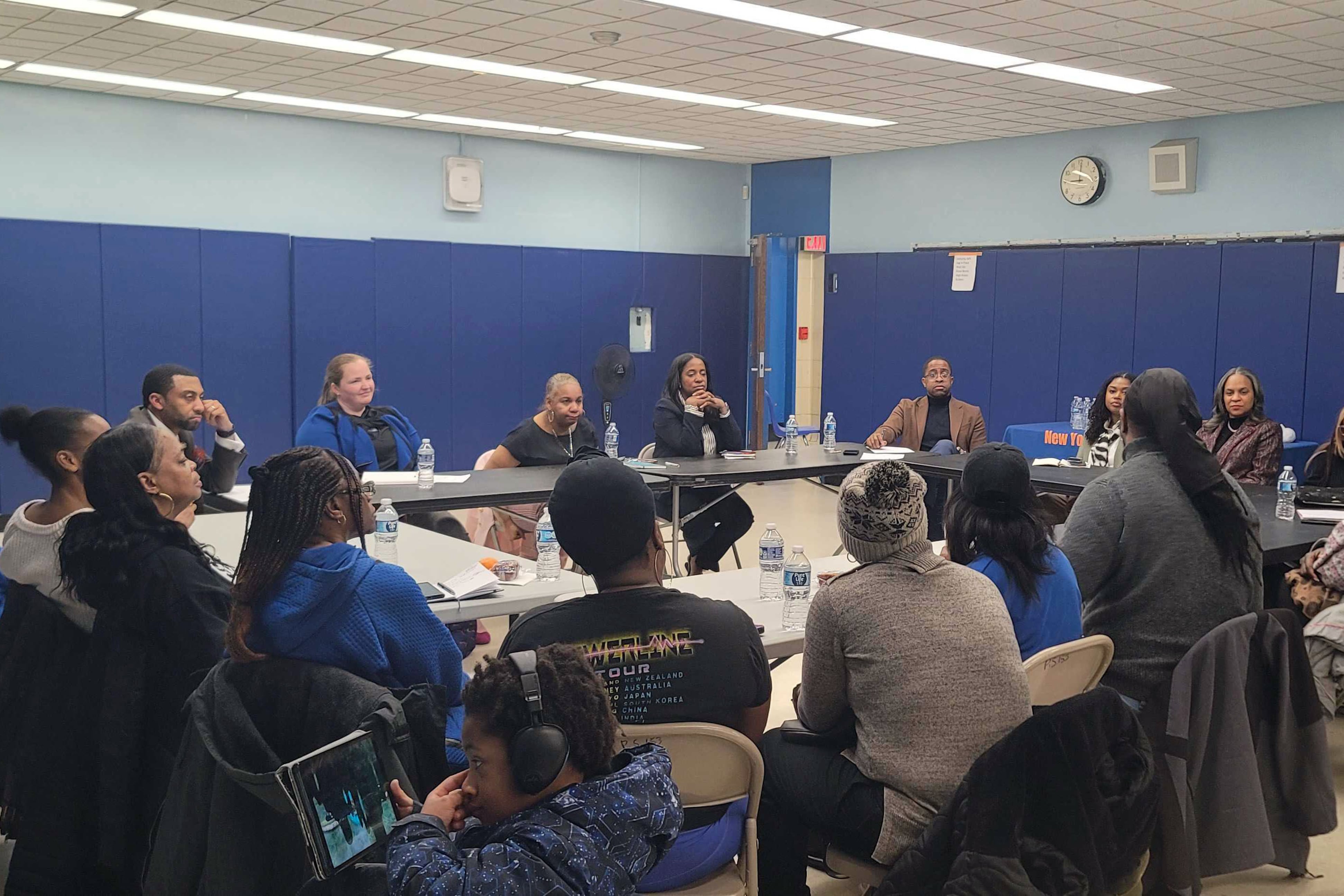A Brooklyn state senator’s push for universal after-school programs is gaining traction among his Albany colleagues.
After Zellnor Myrie’s monthslong effort discussing the importance of expanding after-school programs, the state senate tucked a line into its recent spending proposal: “The Senate is interested in exploring pathways to achieving universal coverage for afterschool programming.”
Though the senate’s proposal — released in advance of finalizing Gov. Kathy Hochul’s budget due April 1 — is largely symbolic and sets no price tag for such a program, the nod is significant. It’s the first time the legislative body included such a reference to universal after-school, according to Myrie, whose office did a deep dive into the archives.
Building on that momentum, Myrie last week introduced legislation directing the state’s Office of Children and Family Services to conduct a feasibility study for a statewide program, looking at how much it might cost to provide year-round after-school programming to every child who wants a seat.
Myrie believes that it’s all the more urgent for the state to step in as New York City is cutting back on some after-school programs, as Chalkbeat recently reported.
“This should be at the top of our agenda if we are in fact serious about public safety, the future of our children, and the health of our communities,” said Myrie, who represents a swath of Brooklyn from Crown Heights and East Flatbush to Park Slope and Windsor Terrace.
As food, housing, and transportation have gone up, paying for child care has become increasingly difficult. In 2022, the city lost an estimated $23 billion from working parents who either left the city or cut back on hours because of child care needs, according to the city’s Economic Development Corporation.
Myrie believes the after-school programs he attended growing up, such as his middle school step team and the Crown Heights Youth Collective, helped put him on his path to college, law school, and now as an elected official in Albany representing the community in which he was born and raised.
“After-school was a lifeline not just for me because of the skills and confidence I was able to acquire, but also for my mom — that I had a safe place to stay,” he said. “I truly credit after-school for keeping me off the streets.”
He also cited data from the U.S. Office of Juvenile Justice and Delinquency Prevention that violent crimes committed by children ages 7-17 spike between the hours of 3-6 p.m.
Calls for universal after-school in NYC have stalled before
New York City officials said they would review whatever bills come their way on the matter.
“Support from all our government partners in providing services to young people is always welcome,” Mark Zustovich, spokesperson for the Department for Youth and Development, said in a statement.
Creating such a pricey program for the nation’s largest school district has faced hurdles before. After former Mayor Bill de Blasio vastly expanded free after-school programs for middle schoolers a decade ago, aiming to reach all children in grades 6-8 who wanted a seat, New York City Council has tried to expand after-school even further, unsuccessfully introducing legislation in 2018 and again last year.
For its roughly 900 after-school programs — reaching more than half of the city’s 1,600 schools — the city spent about $420 million last fiscal year on “out of school time” programs and is projected to spend $393 million for the upcoming fiscal year, according to public documents. The city was serving about 104,000 students in after-school programs as of October, according to the mayor’s management report.
The city also runs 92 school-based Beacon community centers and 99 Cornerstone programs based at public housing complexes.
Myrie believes that planting the seeds to build the political will for universal after-school could help it follow in the footsteps of New York City’s effort to make prekindergarten available to all 4-year-olds. That ambitious initiative has been a huge boon for families, saving them upwards of $15,000 a year, and the Adams administration’s plan to scale back pre-K for 3-year-olds has faced fierce opposition.
Earlier this month, a group of City Council members urged the governor and other Albany leaders to support universal after-school programming.
“Beyond alleviating the financial burdens facing families, expanding access to afterschool would also generate substantial economic advantages for the city,” City Council member Rita Joseph, who chairs the education committee, and 18 other council members wrote in a March 8 letter. “By enhancing the accessibility of after-school programs, New York could enhance productivity, retaining more adults within the city during their peak working years.”
Universal after-school as an integration tool
Parents on the Community Education Council for District 1 had been pushing for universal after-school in their Lower East Side and East Village schools when they launched a diversity admissions policy before the pandemic to integrate their schools.
“One of the determining factors parents look at for schools is after school,” said Naomi Peña, former president of the parent-led advisory council.
Schools that did not have a high enough concentration of families from low-income households often had after-school programs that charged fees, which was a hurdle for many parents.
“We argued that providing free afterschool would help integrate these schools, and it helps lift the burden off of families,” she said.
Advocating for the plan, however, lost momentum once the pandemic hit.
Amy Zimmer is the bureau chief for Chalkbeat New York. Contact Amy at azimmer@chalkbeat.org.







